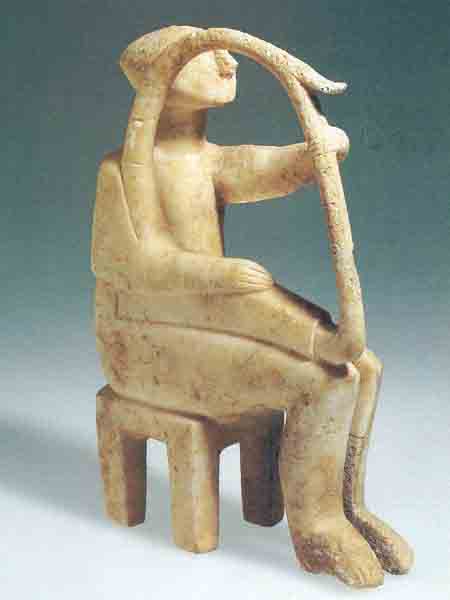
Rapt in his music, this ancient musician tilts his head toward the sky. Found on one of the Greek islands known as the Cyclades, the delicate figure (measuring only 14 inches high) was carved from local marble almost 4,500 years ago. Working with exceptional skill and patience, the Cycladic sculptor captured the musician between notes—the harpist’s right arm rests on the instrument’s sound box while his left encircles the harp’s frame. An abstract swan’s head decorates the top of the harp, an ornamental motif that continued in Greek and Etruscan art until the early fifth century B.C. Although the ancient meaning of the sculpture remains unknown, the discovery of a similar harpist and numerous other sculptures in Cycladic graves suggests they were made as funeral offerrings.

Harpists and their music have a long history in the ancient Near East as well as in Greece. The earliest known depiction of a stringed instrument—an engraving in stone pavement of a man with a harp-like instrument, dating between 3500 and 3200 B.C.—was discovered at Megiddo. First Kings 10:11 tells us that Solomon had sandalwood harps made for his musicians, while 1 Chronicles 13:8 describes David and all Israel “dancing before God with all their might—with songs, lyres, harps, timbrels, cymbals, and trumpets.”
Already a library member? Log in here.
Institution user? Log in with your IP address.

